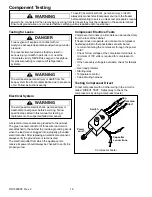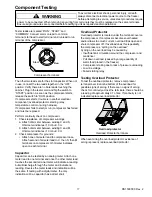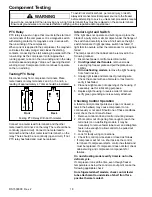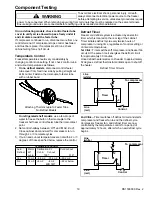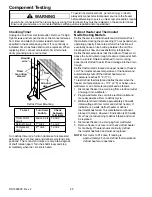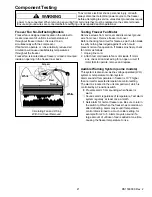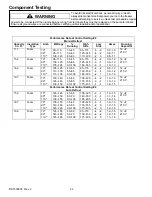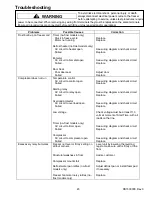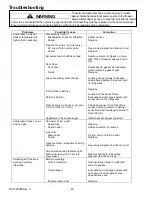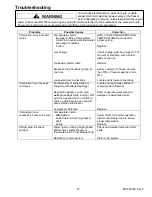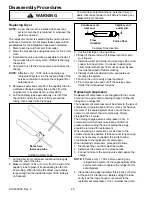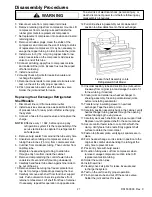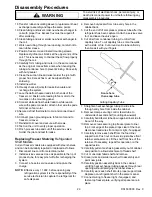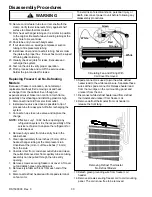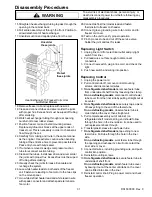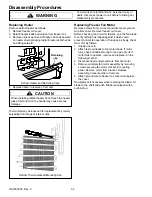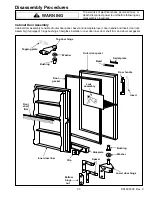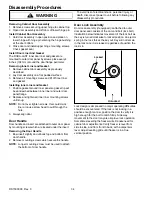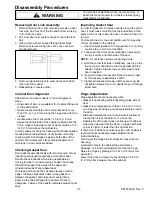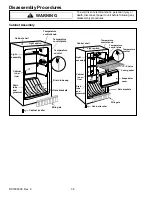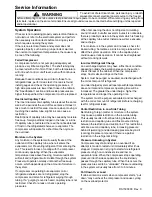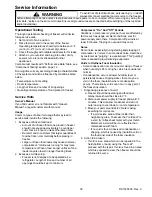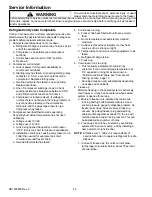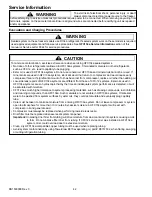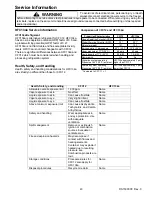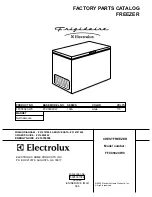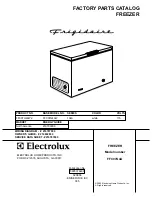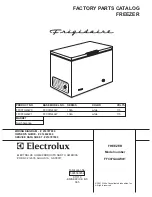
29
RS1500000 Rev. 0
Disassembly Procedures
To avoid risk of electrical shock, personal injury, or
death, disconnect power to unit before following any
disassembly procedures.
WARNING
!
18.Transfer rubber insulating sleeve to replacement heat
exchanger assembly and tape the same points.
19.Clean tubing and silver solder new heat exchanger to
coil with proper flux. Excess flux must be wiped off
after soldering.
20.Clean tubing and silver solder new heat exchanger to
the coil.
21.Work new tubing through rear opening, careful not to
tear rubber sleeve.
22.Position freezer coil and install mounting screws.
Replace styrofoam air blocks at the upper ends of the
coil. This is necessary to channel the air flow properly
through the coil.
23.Carefully form tubing and route it in the same manner
as the original. Use extreme care when bending the
tubing at entrance hole to prevent kinking. Pack entry
with butyl sealer.
24.Clean the suction line and silver solder the joint with
proper flux. Excess flux must be wiped off after
soldering.
25.Install new drier.
26.Visually check all joints for leaks. Evacuate and
recharge the system.
27.Lace the defrost heater leads to both ends of the
freezer coil. Fasten wire leading to fan motor to the
two clips on the mounting panel.
28.Connect white defrost heater lead to white lead-in
wire with spade connector, attach other wire to spade
terminal on fan motor.
29.Secure defrost thermostat to coil and connect lead
wire.
30.Connect green grounding wire to fan motor and to
freezer coil cover.
31.Reinstall coil cover and secure with screws.
32.Test run the unit to verify proper operation.
33.Pinch process tube and cut off the service valve.
Solder the joint and test for leaks.
Replacing Freezer Shelving
Refrigerated
Shelf Models
Current freezer models are equipped with steel shelves
and can be individually repaired or replaced as follows:
1. Disconnect line cord from electrical outlet.
2. Install service valve as close as possible to the tip of
process tube, for easy pinch-off after recharging the
system.
3. Connect a hose to service valve and capture the
charge.
NOTE:
Effective July 1, 1992, before opening any
refrigeration system it is the responsibility of the
service technician to capture the refrigerant for
safe disposal.
4. Remove butyl sealer from tube entry hole in the
cabinet back.
5. Cut the end off of compressor process tube after the
refrigerant has been captured. Attach a service valve
to it, and leave the valve open.
6. Cut drier from condenser tubing. Cut drier from
capillary tube. To cut capillary tube, score the walls
with a knife or file. Cut around entire tube uniformly,
then break it with your fingers.
Score here
then snap tube
1"
Cutting Capillary Tube
7. Straighten heat exchanger tubing to slide tube
through entry hole from inside the cabinet.
8. Remove clamp securing control feeler tube to
underside of second shelf (counting downward).
9. Carefully bend feeler tube down against liner side to
be out of the way.
10.Remove screws securing top freezer plate to liner
top. Front edge of the plate, drops clear of the liner,
disconnect lead wires from interior light, if equipped.
11. Carefully remove each shelf from the food liner
support rails. Push out on liner side just above front
retainer embossment. Lift the shelf front free of the
retainer. If necessary, repeat this operation on the
opposite side.
12.Carefully pull entire shelving assembly out of cabinet
and position to allow detachment of failed shelf.
13.Cut or unsolder failed shelf and remove.
14.Clean joints and solder new shelf to assembly and
paint new joints.
15.Carefully position assembly back in the cabinet,
verifying heat exchanger tubing passes through rear
opening without damaging the rubber sleeve.
16.Carefully work each shelf into its proper support rails.
Replace non-refrigerant shelf in the same manner.
17.Connect wiring to freezer light, if equipped, and
fasten top freezer plate, verifying all spacers are in
place.


